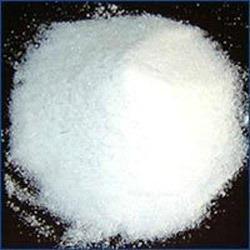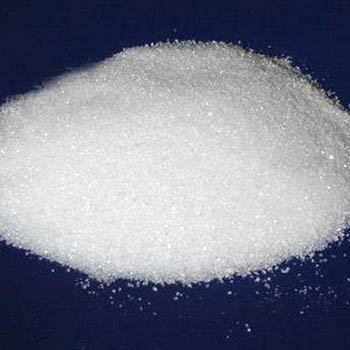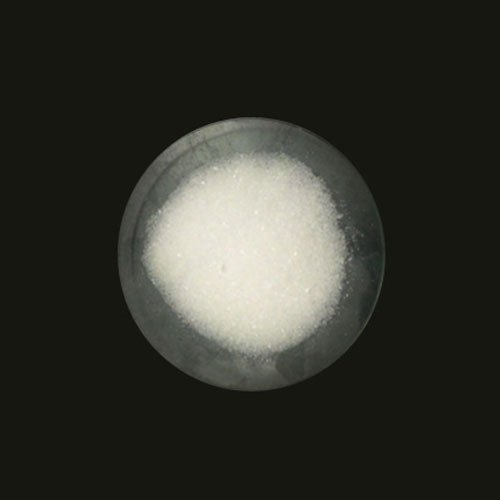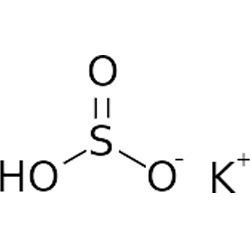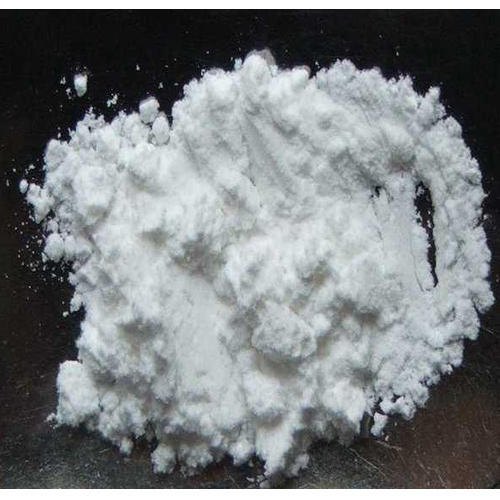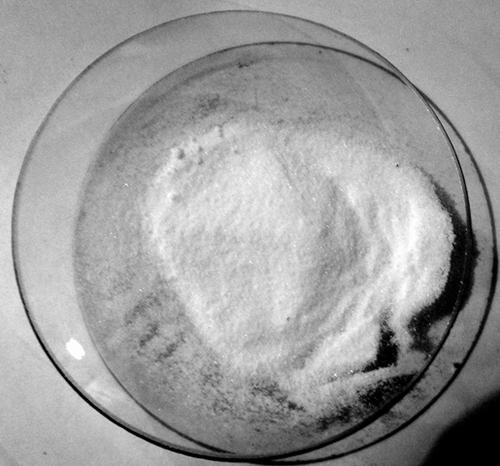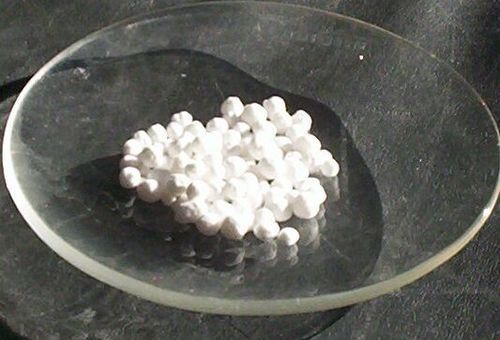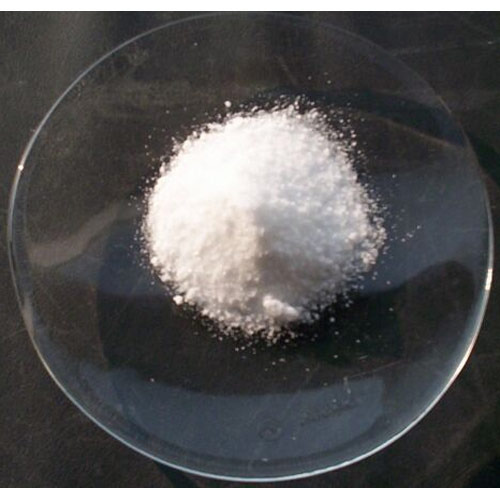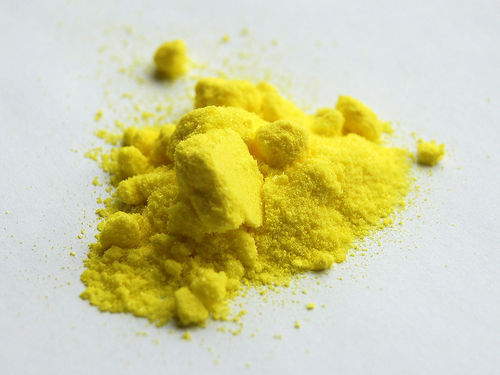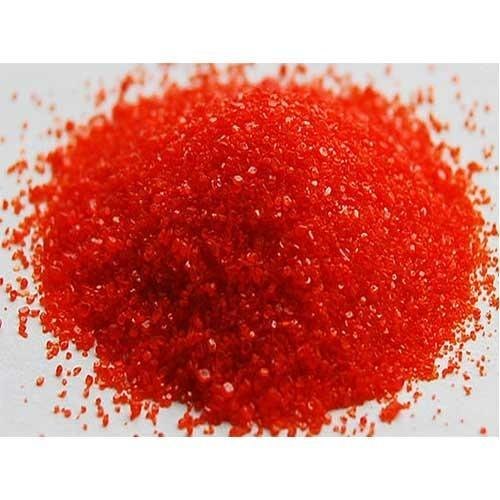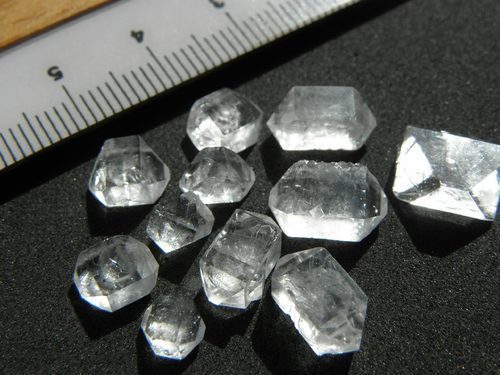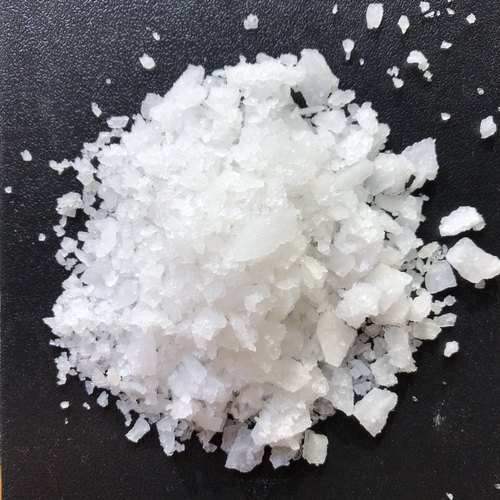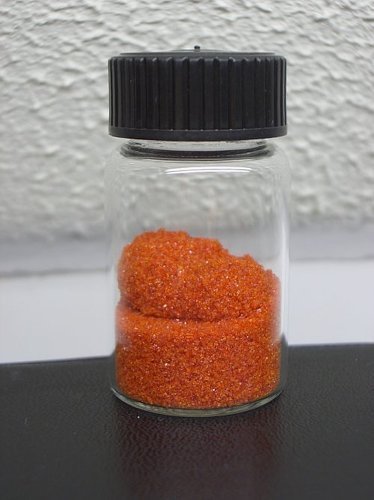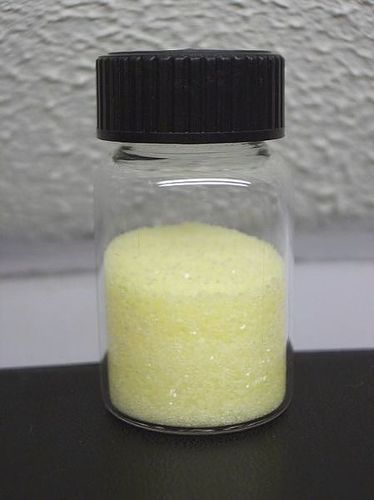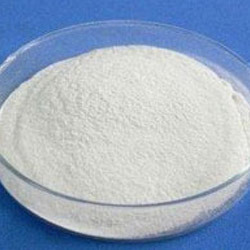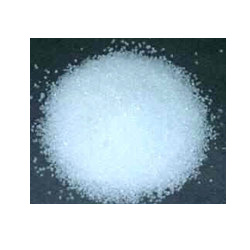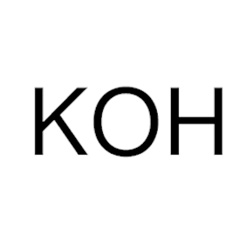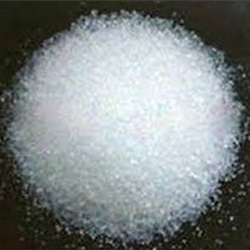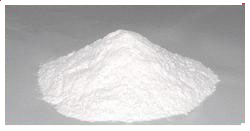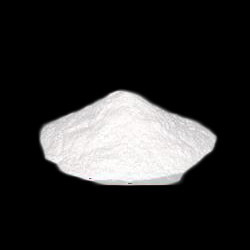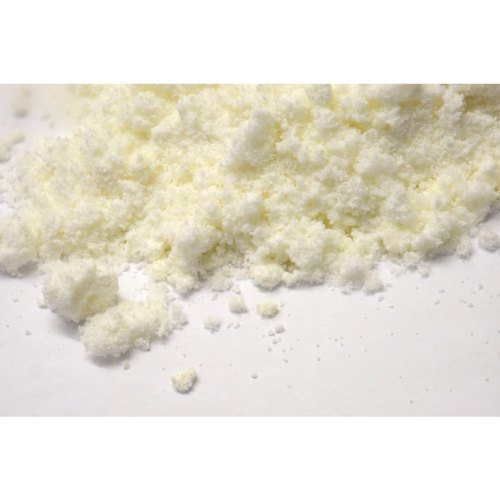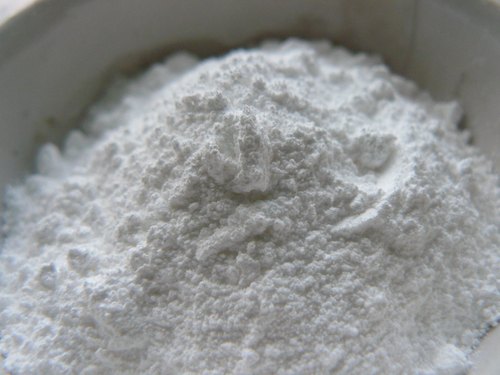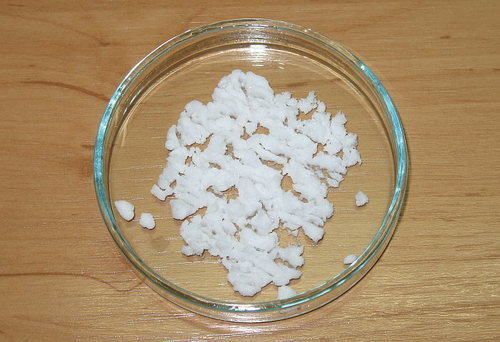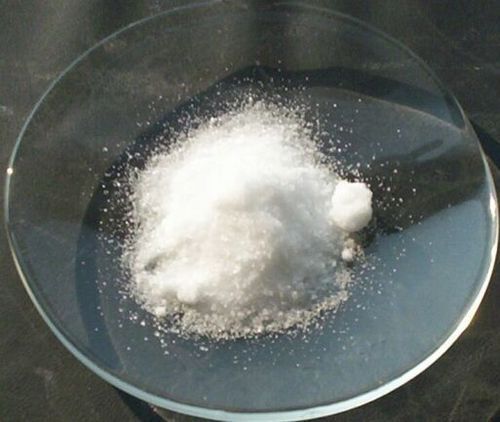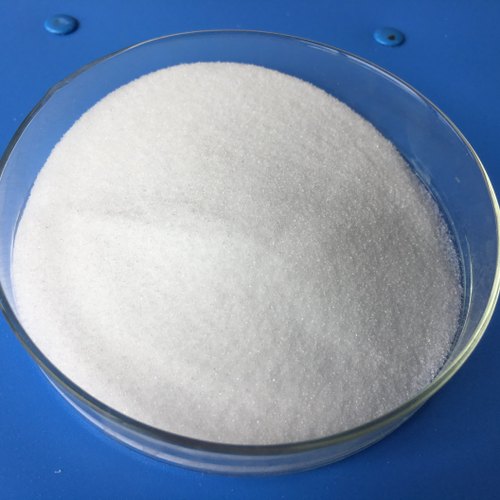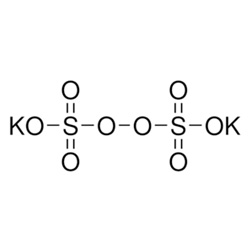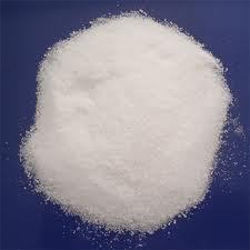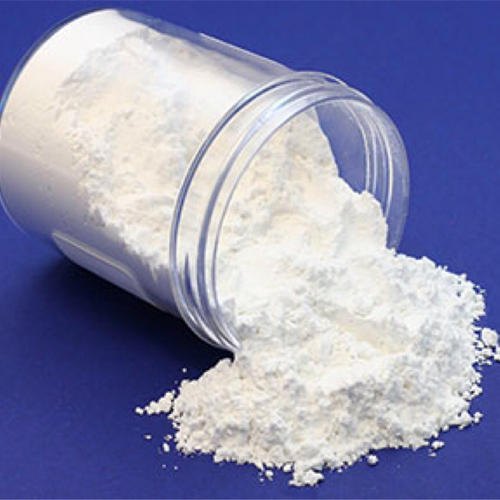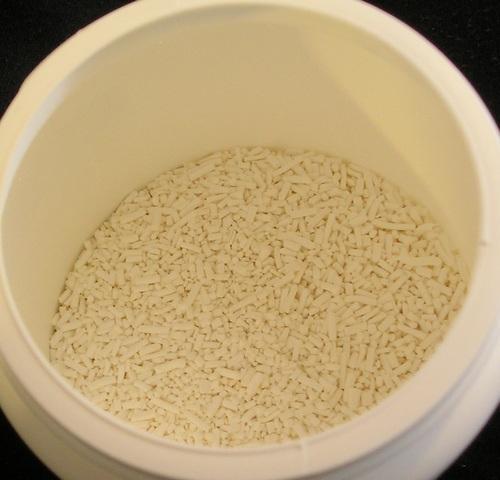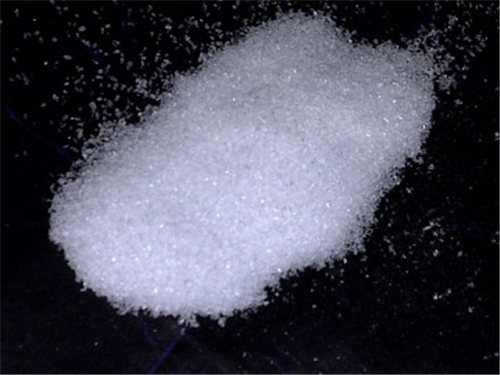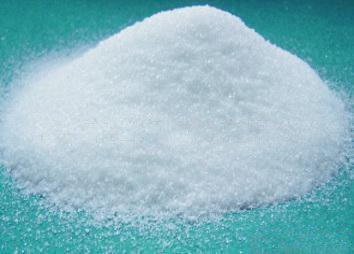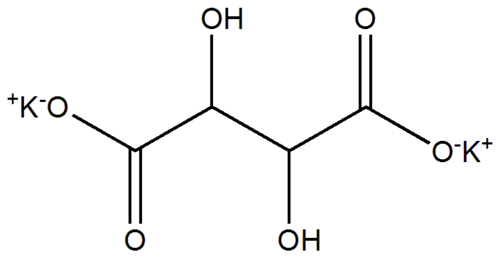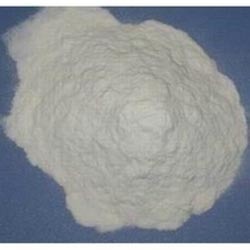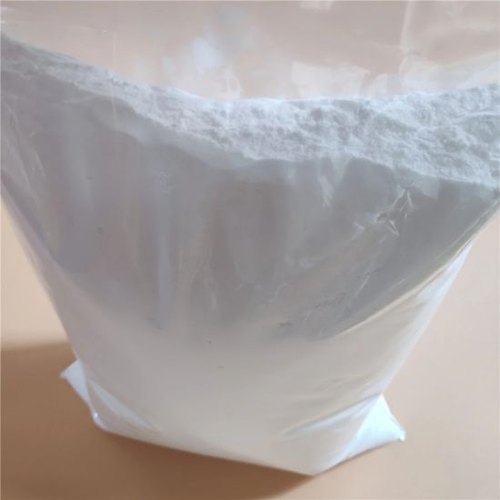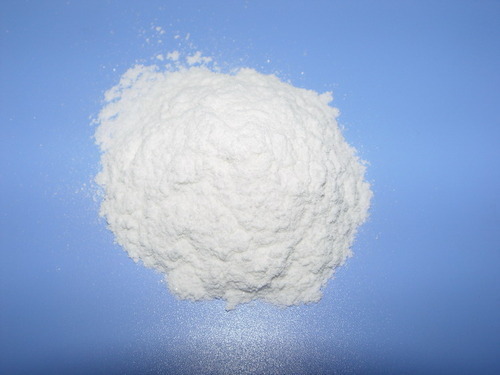Potassium Compound
We are manufacturer, exporter, supplier of potassium compound in Mumbai India. Our product range includes a wide range of potassium iodate, potassium iodide, potassium oxalate, potassium tartrate, potassium bifluoride, potassium bisulphite, potassium metabisulphite pure and potassium formate.
Potassium Acetate
Potassium acetate (CH3COOK) is the potassium salt of acetic acid.
Tripotassium Citrate
Tripotassium Citrate is a potassium salt of citric acid with the molecular formula C6H5K3O7. It is a white, slightly hygroscopic crystalline powder. It is odorless with a saline taste. It contains 38.3% potassium by mass. As a food additive, potassium citrate is used to regulate acidity and is known as E number E332. Medicinally, it may be used to control kidney stones derived from either uric acid or cystine.
Potassium Bifluoride
We are the leading brand in the market to provide our valuable clients the best grade of Potassium Bifluoride. Offered potassium bifluoride is used for manufacturing wood preservatives. Our offered potassium bifluoride is formulated by skilled professionals using quality chemical compounds and modern technology in observance with industry norms. The provided potassium bifluoride is tested by our quality experts at our labs so as to ensure its purity.
Features:
- Balanced composition
- Colorless salt
- Purity
Potassium Bisulphite
500 Gm Packs Potassium hydrogen sulphite or potassium bisulphite is a chemical compound with the chemical formula KHSO3. It is used during the production of beverages as a sterilising agent. This additive is classified as E number E228 under the current EU approved food additive.
Potassium Bitartrate
Potassium bitartrate, also known as potassium hydrogen tartrate, with formula KC4H5O6, is a byproduct of winemaking. In cooking it is known as cream of tartar. It is the potassium acid salt of tartaric acid (a carboxylic acid).
Potassium Bromate
Potassium bromate (KBrO3), is a bromate of potassium and takes the form of white crystals or powder.
Potassium Bromide
Potassium bromide (KBr) is a salt, widely used as an anticonvulsant and a in the late 19th and early 20th centuries, with over-the-counter use extending to 1975 in the US. Its action is due to the bromide ion (sodium bromide is equally effective). Potassium bromide is used as a veterinary drug, as an antiepileptic medication for dogs.
Potassium Chloride
The chemical compound potassium chloride (KCl) is a metal halide salt composed of potassium and chlorine. In its pure state, it is odorless and has a white or colorless vitreous crystal appearance, with a crystal structure that cleaves easily in three directions. Potassium chloride crystals are face-centered cubic. Potassium chloride was historically known as "muriate of potash". This name is occasionally still encountered in association with its use as a fertilizer. Potash varies in color from pink or red to white depending on the mining and recovery process used. White potash, sometimes referred to as soluble potash, is usually higher in analysis and is used primarily for making liquid starter fertilizers. KCl is used in medicine, scientific applications, and food processing. It occurs naturally as the mineral sylvite and in combination with sodium chloride as sylvinite.
Potassium Chromate
Potassium chromate (K2CrO4) is a yellow chemical indicator used for identifying concentrations of chloride ions in a salt solution with silver nitrate (AgNO3). It is a class two carcinogen and can cause cancer on inhalation.
Potassium Dichromate
Potassium dichromate, K2Cr2O7, is a common inorganic chemical reagent, most commonly used as an oxidizing agent in various laboratory and industrial applications. As with all hexavalent chromium compounds, it is acutely and chronically harmful to health. It is a crystalline ionic solid with a very bright, red-orange color. The salt is popular in the laboratory because it is not deliquescent, in contrast to the more industrially relevant salt sodium dichromate.
Potassium Dihydrogen Orthophosphate
Monopotassium phosphate, MKP, (also potassium dihydrogen phosphate, KDP, or monobasic potassium phosphate), KH2PO4, is a soluble salt of potassium and the dihydrogen phosphate ion which is used as a fertilizer, a food additive and a fungicide. It is a source of phosphorus and potassium. It is also a buffering agent. When used in fertilizer mixtures with urea and ammonium phosphates, it minimizes escape of ammonia by keeping the pH at a relatively low level.
Potassium Formate
Potassium formate is the potassium salt of formic acid. It is an intermediate in the formate potash process for the production of potassium. Potassium formate has also been studied as a potential environmentally friendly deicing salt for use on roads.
Potassium Ferricyanide
Potassium ferricyanide is the chemical compound with the formula K3[Fe(CN)6]. This bright red salt contains the octahedrally coordinated [Fe(CN)6]3− ion.It is soluble in water and its solution shows some green-yellow fluorescence.
Potassium Ferrocyanide
Potassium ferrocyanide is the inorganic compound with formula K4[Fe(CN)6] · 3H2O. It is the potassium salt of the coordination complex [Fe(CN)6]4−. This salt forms lemon-yellow monoclinic crystals.
Potassium Fluoride Anhydrous
Potassium fluoride is the chemical compound with the formula KF. After hydrogen fluoride, KF is the primary source of the fluoride ion for applications in manufacturing and in chemistry. It is an alkali halide and occurs naturally as the rare mineral carobbiite. Aqueous solutions of KF will etch glass due to the formation of soluble fluorosilicates, although HF is more effective.
Potassium Hydrogen Phthalate
Potassium hydrogen phthalate, often called simply KHP, is an acidic salt compound. It forms white powder, colorless crystals, a colorless solution, and an ionic solid that is the monopotassium salt of phthalic acid. The hydrogen is slightly acidic, and it is often used as a primary standard for acid-base titrations because it is solid and air-stable, making it easy to weigh accurately. It is not hygroscopic.It is also used as a primary standard for calibrating pH meters because, besides the properties just mentioned, its pH in solution is very stable.
Potassium Hydroxide Powder
| Specifications | |
|---|---|
| Appearance | White powder |
| Assay | Min 85.0% |
| Carbonate (as K2CO3) | Max 2% |
| Chloride (Cl) | Max 0.03% |
| Sulphate (SO4) | Max 0.02% |
Potassium Hydroxide Pellets Extra Pure
| Specifications | |
|---|---|
| Appearance | White deliquescent pellets |
| Assay (as KOH) | Min 85.0% |
| Carbonate (as K2CO3) | Max 2.0% |
| Chloride (Cl) | Max 0.02% |
| Sulphate (SO4) | Max 0.01% |
| Heavy metal (as Pb) | Max 0.002% |
| Iron (Fe) | Max 0.002% |
Potassium Hydroxide Powder AR
| Specifications | |
|---|---|
| Appearance | White deliquescent pellets |
| Assay (as KOH) | 85.0- 100.5% |
| Identification | Passes test |
| Appearance of solution | Passes test |
| Carbonate (as K2CO3) | Max 1.0% |
| Chloride (Cl) | Max 0.005% |
| Phosphate (PO4) | Max 0.0005% |
| Sulphate (SO4) | Max 0.003% |
| Heavy metal (as Pb) | Max 0.001% |
| Iron (Fe) | Max 0.001% |
| Total nitrogen (N) | Max 0.001% |
| Calcium (Ca) | Max 0.005% |
| Nickel (Ni) | Max 0.001% |
| Sodium (Na) | Max 0.5% |
Potassium Hydroxide Flakes
| Specifications | |
|---|---|
| Appearance | White deliquescent flakes |
| Assay | Min 85% |
| Carbonate (as K2CO3) | Max 2% |
| Chloride (Cl) | Max 0.03% |
| Sulphate (SO4) | Max 0.02% |
Potassium Hydrogen Sulphate 98%
| Specifications | |
|---|---|
| Appearance | White crystalline powder |
| Assay (as KHSO4) | Min 98% |
| Chloride (Cl) | Max 0.005% |
| Heavy metal (as Pb) | Max 0.005% |
| Iron (Fe) | Max 0.005% |
| Calcium (Ca) | Max 0.02% |
Potassium Hydrogen Sulphate 99%
| Specifications | |
|---|---|
| Appearance | White crystalline powder |
| Assay | Min 99% |
| Insoluble matter | Max 0.003% |
| Chloride (Cl) | Max 0.0005% |
| Phosphate (PO4) | Max 0.001% |
| Total nitrogen (N) | Max 0.001% |
| Heavy metal (as Pb) | Max 0.0005% |
| Aluminium (Al) | Max 0.002% |
| Calcium (Ca) | Max 0.005% |
| Iron (Fe) | Max 0.0005% |
| Sodium (Na) | Max 0.02% |
Potassium Iodate
We are instrumental in offering a premium qualityPotassium Iodate. The offered potassium iodate is used at the time of a nuclear emergency; the tablets stop the thyroid gland. Our given potassium iodate is used to protect against accumulation of radioactive iodine in the thyroid. The potassium iodate provided by us can also be availed at nominal rates in a confine time.
Features:
- Elevated shelf life
- Balanced composition
- White crystals or powder
Potassium Iodide
Supported by skilled employees, we are voluntarily engaged in the field of providing Potassium Iodide.
Features:
- Completely tested
- Reliable nature
- Fine composition
- Accurate results
- Longer shelf life
Potassium Iodide is known as Potassium Salt of Hydriodic Acid [HI], available in white crystalline powder form. It is an inorganic compound and has Molecular Formula KI. Its Ionic form is K+ I-, and iodide ion being mild reducing agent, it can be easily oxidized to Iodine by powerful oxidizing agent like chlorine. With elemental iodine it forms I3 (tri iodide), the salts of tri iodide are highly water soluble. On long exposure to air Potassium Iodide becomes yellow due to liberation of Iodine.
Potassium Iodide is more readily soluble in water. The solubility in water increases with the increase in temperature ie. (140 gms. /100 ml @ 20°c, 206 gms/ 100 ml @ 100°c). It is slightly soluble in ether, ammonia. It absorbs water less readily than Sodium Iodide and hence convenient to use. It is produced industrially by treating Iodine with Potassium Hydroxide. It can also be prepared by the action of Potassium Bicarbonate on Hydriodic acid.
It finds its applications mainly in organic synthesis for the preparation of Aryl iodides [Sandmeyer Reaction] from Aryl amine. Aryl amines are first diazotized by the action of Nitrous acid to obtain Arene diazonium salts which are then iodinated by using Potassium iodide to obtain Aryl Iodide.
It is used as a key raw material in the synthesis of Iodoalkanes such as Methyl iodide and also in the preparation of Silver Iodide which is used in Photography for high speed photographic films.
Other applications include: Preparation of Potassium Iodate which is obtained by the oxidation of Potassium Iodide with Potassium chlorate or Potassium bromate. It is useful in the treatment of radiation poisoning resulting from nuclear accidents and also as a nutritional supplement for iodine in poultry feedse. Wer provide in all type of packings.
Potassium Metavanadate
Other Information
- Minimum Order Quantity: 100 Gram(s)
Potassium Metabisulphite Pure
Potassium Metabisulphite Pure, K2S2O5, also known as potassium pyrosulfite, is a white crystalline powder with a pungent sulfur odour. The main use for the chemical is as an antioxidant or chemical sterilant. It is a disulfite and is chemically very similar to sodium metabisulfite, with which it is sometimes used interchangeably. Potassium metabisulfite is generally preferred out of the two as it does not contribute sodium to the diet.
Potassium Metaperiodate Pure
Other Information
- Minimum Order Quantity: 500 Gram(s)
Potassium Nitrate
We offer our clients an optimum quality Potassium Nitrate. Our given potassium nitrate is formulated from the optimum quality chemical compounds by our experts as per the norms of standards. This potassium nitrate is acknowledged in agriculture, industry, solar energy plants, food and pharma. Along with that, provided potassium nitrate is accessible in different packaging options as per the demands of the customers.
Features:
- Exact composition
- High purity
- Long shelf life
Potassium Oxalate
A wide quality array of products comprising Chemical Compound, Organic Compound, Boric Acid, Carnauba Wax, Crude Iodine, Ammonium Ferric Citrate, Gelatinous Substance, Inorganic Compound, Immersion Oil, Laboratory Chemicals,Magnesium Metal Turning, Wool Wax, Acenaphthene Chemical, Magnesium Metal Powder and Malt Sugar.
Potassium Persulphate 98%
| Specifications | |
|---|---|
| Appearance | A white powder |
| Assay (iodometric) | Min 98% |
| Chloride (Cl) | Max 0.005% |
| Heavy metal (as Pb) | Max 0.005% |
| Iron (Fe) | Max 0.002% |
| Manganese (Mn) | Max 0.0005% |
Potassium Persulphate 98% AR
| Specifications | |
|---|---|
| Appearance | A white powder |
| Assay | Min 98% |
| Insoluble matter | Max 0.003% |
| Chloride (Cl) | Max 0.002% |
| Ammonium (NH4) | Max 0.0005% |
| Arsenic (As) | Max 0.00004% |
| Copper (Cu) | Max 0.001% |
| Iron (Fe) | Max 0.0005% |
| Lead (Pb) | Max 0.001% |
| Manganese (Mn) | Max 0.0001% |
Potassium Pyroantimonate
With affluent industry understanding and knowledge, we are involved in manufacturing and exporting a wide quality array of products comprising Chemical Compound.
Potassium Sorbate
Potassium sorbate is the potassium salt of sorbic acid, chemical formula CH3CH=CH-CH=CH-CO2K. It is a white salt that is very soluble in water (58.2% at 20 °C). It is primarily used as a food preservative (E number 202).Potassium sorbate is effective in a variety of applications including food, wine, and personal care products. While sorbic acid is naturally occurring in some berries, virtually all of the world's production of sorbic acid, from which potassium sorbate is derived, is manufactured synthetically.
Potassium Sulphate Crystal
Potassium Sulphate Crystal (in British English potassium sulphate, also called sulphate of potash, arcanite, or archaically known as potash of sulfur) is a non-flammable white crystalline salt which is soluble in water. The chemical is commonly used in fertilizers, providing both potassium and sulfur.
Potassium Sodium Tartrate
Potassium sodium tartrate is a double salt first prepared (in about 1675) by an apothecary, Pierre Seignette, of La Rochelle, France. As a result the salt was known as Seignette's salt or Rochelle salt. Rochelle salt is not to be confused with rock salt, which is simply the mineral form of sodium chloride. Potassium sodium tartrate and monopotassium phosphate were the first materials discovered to exhibit piezoelectricity.[2] This property led to its extensive use in "crystal" gramophone (phono) pick-ups, microphones and earpieces during the post-War consumer electronics boom of the mid-20th Century. Such transducers had an exceptionally high output with typical pick-up cartridge outputs as much as 2 volts or more. Rochelle salt is deliquescent so any transducers based on the material deteriorated if stored in damp conditions.
It is a colorless to blue-white salt crystallizing in the orthorhombic system. Its molecular formula is KNaC4H4O6·4H2O. It is slightly soluble in alcohol but more completely soluble in water. It has a specific gravity of about 1.79, a melting point of approximately 75 °C, and has a saline, cooling taste. As a food additive, its E number is E337.
It has been used medicinally as a laxative. It has also been used in the process of silvering mirrors. It is an ingredient of Fehling's solution and Nylander's test, formerly used in the determination of reducing sugars in solutions.
Potassium Tartrate
Potassium tartrate, dipotassium tartrate or argol has formula K2C4H4O6. It is the potassium salt of tartaric acid. It is often confused with potassium bitartrate, also known as cream of tartar. As a food additive, it shares the E number E336 with potassium bitartrate.
Potassium Tertbutoxide
Potassium Tertbutoxide is the chemical compound with the formula K (CH3)3CO−. This colourless solid is a strong base (pKa of conjugate acid around 17) which is useful in organic synthesis. It exists as a tetrameric cubane-like cluster. It is often seen written in chemical literature as potassium t-butoxide.
Potassium Tertbutoxide
Potassium Tertbutoxide is the chemical compound with the formula K (CH3)3CO−. This colourless solid is a strong base (pKa of conjugate acid around 17) which is useful in organic synthesis. It exists as a tetrameric cubane-like cluster. It is often seen written in chemical literature as potassium t-butoxide.
Potassium Thiocyanate
Potassium Thiocyanate is the chemical compound with the molecular formula KSCN. It is an important salt of the thiocyanate anion, one of the pseudohalides. The compound has a low melting point relative to most other inorganic salts.
Chemical Products
- Aluminium Compound
- Ammonium Compound
- Antimony Compound
- Barium Compound
- Bismuth Compound
- Boric Acid
- Cadmium Compound
- Calcium Compound
- Cetramide
- Chemical Compound
- Chemical Element
- Copper Compound
- Cuprous Compound
- Ferric Compound
- Ferrous Compound
- Food Additives
- Gelatinous Substance
- Gum Powder
- Inorganic Compound
- Laboratory Chemicals
- Laboratory Equipment
- Lead Compound
- Lithium Compound
- Manganese Compound
- Magnesium Compound
- Magnesium Metal Turning
- Mercuric Compound
- Micrcoscopy Stains And Solutions
- Natural Oil
- Nickel Compound
- Organic Compound
- Potassium Compound
- Speciality Chemicals
- Silver Compound
- Sodium Part I
- Sodium Part II
- Sodium Part III
- Strontium Compound
- Zinc Compound

